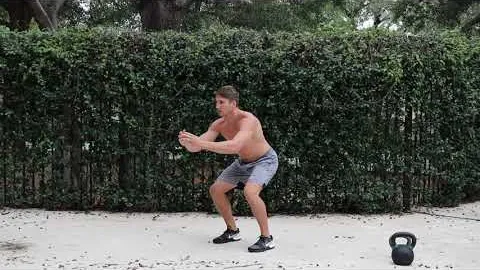
Are you looking for an exercise that can effectively build strength and stability in your lower body? Look no further than the isometric squat hold. This challenging exercise targets multiple muscle groups simultaneously and can provide a wide range of benefits. Whether you are a beginner or an experienced fitness enthusiast, incorporating the isometric squat hold into your training routine can take your workout to the next level.
The isometric squat hold, also known as an isometric squat or an isohold squat, is a static exercise that involves holding a squat position for an extended period of time. Unlike traditional squats that involve dynamic movements, the isometric squat hold requires you to hold a specific position without any movement. This exercise primarily targets the muscles in your lower body, including your quadriceps, hamstrings, glutes, and calves.
To perform an isometric squat hold, follow these steps:
Isometric holds are excellent for increasing muscle endurance because they require you to hold a position for an extended period of time. The isometric squat hold can help you build endurance in your leg muscles, allowing you to perform other exercises for longer durations without getting fatigued.
The isometric squat hold is a highly effective exercise for building strength and stability in your lower body. By holding a static squat position, you engage multiple muscle groups simultaneously, including your quadriceps, hamstrings, glutes, and calves. Regularly performing isometric squat holds will strengthen these muscles, leading to increased overall strength and stability.
While the isometric squat hold primarily targets the muscles in your lower body, it also engages your core muscles. Maintaining proper posture and stability during the exercise requires you to activate your core muscles, helping to strengthen and tone your abs, obliques, and lower back.
Isometric exercises like the squat hold are beneficial for improving joint strength and mobility. By holding a static position, you are placing stress on your joints, which helps to strengthen the surrounding muscles and improve joint stability. This can be particularly beneficial for individuals with knee or hip issues.
If you are short on time but still want to get an effective lower body workout, the isometric squat hold is a great option. Since this exercise is static and does not involve any movement, you can perform it almost anywhere and at any time. Just a few minutes of isometric squat holds can provide a challenging workout and help you make the most of your limited time.
If you are new to the isometric squat hold, it is important to start slowly and gradually increase the duration of your holds. Begin by holding the squat position for 10-15 seconds and gradually increase the time as you build strength and endurance. Additionally, make sure to maintain proper form throughout the exercise to prevent injuries. Keep your chest up, back straight, and knees aligned with your toes.
The isometric squat hold is a challenging exercise that offers numerous benefits for individuals looking to build strength and stability in their lower body. It targets multiple muscle groups simultaneously, helps improve muscle endurance, and enhances core engagement. Incorporating the isometric squat hold into your workout routine can lead to improved strength, joint mobility, and overall fitness. So, why not give this exercise a try and take your fitness journey to new heights?
If you're looking for a gym, fitness club or yoga studio, you've come to the right place.
You can find information about gyms in your area. Browse catalog of gyms and find gyms with classes which are you looking for.
On gym page you can find simple information like address, phone or website. You can find list of available classes. You can check availability of personal training or small group classes. On place page you can also see information about open hours.
You can find gyms near you with amenities, courts, studios and equipments.
Use our map to find gym at your city or district.
In Gym Navigator you can find list of exercises with movies for many body parts.
You can browse exercises catalog and find exercises the best of you.
You can also find exercises grouped into workout plans, which you can use to improve you body. Each routine show you exercises one by one and give you possibility to count you progress and count down rest time.